Japan widens evacuation outside plant zone Dawn.com/World. Excerpts:
TOKYO: Japan on Sunday started the first evacuations of homes outside a government exclusion zone after the March 11 earthquake and tsunami crippled one of the country`s nuclear power plants.
Some 4,000 residents of Iidate-mura village as well as 1,100 people in Kawamata-cho town, in the quake-hit northeast, began the phased relocations to public housing, hotels and other facilities in nearby cities.
Their communities are outside the 20-kilometre radius from the Fukushima Daiichi power plant, officially designated as an area of forced evacuation due to health risks from the radiation seeping from the ageing and damaged plant.
The government told people in communities such as Iidate-mura they had to leave, but authorities are unlikely to punish those who choose to stay.
..
Although Iidate-mura and Kawamata-cho are 30 kilometres away from the plant, they have consistently received high amounts of radioactive materials due to wind patterns.
The Fukushima Nuclear Disaster in Perspective From Scoop/NZ. Excerpts:
First I want to present this report, produced by the New York Academy of Sciences, a report on Chernobyl. It can be downloaded.(2) They translated 5,000 articles from Russian for the first time into English. It seems that nearly a million people have already died as a result of Chernobyl, despite what the WH0(3) says and the IAEA.(4) This is one of the most monstrous cover-ups in the history of medicine. Because everybody should know about this.
Then we extrapolate through to Japan. Japan is by orders of magnitude many times worse than Chernobyl. Never in my life did I think that six nuclear reactors would be at risk.(5) I knew that three GE engineers who helped design these Mark I GE reactors, resigned because they knew they were dangerous.(6)
So Japan built them on an earthquake fault. The reactors partially withstood the earthquake, but the external electricity supply was cut off, and the electricity supplies the cooling water, a million gallons a minute, to each of those six reactors. Without the cooling water, the water [level] falls, and the rods are so hot they melt, like at Three Mile Island, and at Chernobyl.
So the emergency diesel generators, which are as large as a house, got destroyed by the tsunami, so there is no way to keep the water circulating in the reactors.(7) Also, on the roofs of the reactors, not within the containment vessel, are cooling pools. Every year they remove about thirty tons of the most radioactive rods that you can possibly imagine.(8) Each one is twelve feet long and half an inch thick. It gives out so much radiation, that if you stand next to it for a couple of minutes, you'll die. Not drop dead. Remember Litvinenko, the Russian, who got poisoned by polonium?(9) You'll die like that, with your hair falling out, and bleeding with massive infection, like AIDS patients die.
And [the spent fuel rods] are thermally hot, so they have to be put in a big pool, and continually cooled. The pool has really no roof.
There have been three hydrogen explosions, blowing off the roof of the building, not the containment vessel of the core, but the roof. And exposing the cooling pool.(10) Two of the cooling pools are dry. They have no water in them. Meaning that the nuclear fuel rods are covered with a material called zirconium. When zirconium is exposed to air, it burns, it ignites. Two of the cooling pools at this moment are burning. In the cooling pools are many times, like 10 to 20 times more radiation than in each reactor core. In each reactor core is as much long-lived radiation as would be produced by a thousand Hiroshima-sized bombs. We are dealing with diabolical energy.
Plutonium detected in rice paddy by a food manufacturer more than 50 kms away from Fukushima power plant: Physics Forums via Rense. Excerpts:
Additionally, a certain food manufacturing company conducted a survey by themselves. In a rice field is more than 50kms away from the Fukushima power plant, it was found that there was very high radiation that is very different to what the government released.
High density plutonium is in the rice field that was mentioned previously.
According to this food manufacturing company, they currently don't announce these results due to the large influence* that this rice field has high concentration of plutonium.
* Note: It is not mentioned what the influence is but it implies they do not currently release the information as it may have an impact on the media/public.
Mitsubishi Electric net profit drops by 75.5% to $94 million in March quarter The Economic Times. Excerpts:
TOKYO: Japan's Mitsubishi Electric said Monday its net profit plunged 75.5 percent to 7.6 billion yen ($94 million) in the quarter to March in the wake of a massive quake and tsunami.
Its operating profit for the quarter edged upward to 41.2 billion yen from 39.9 billion yen as sales remained unchanged at 1.04 trillion yen, the electronics manufacturer said.
"Due to the Great Eastern Japan Disaster, operations at some of our plants came to a halt, while planned blackouts lowered the operating rate," Mitsubishi said.
The reverberations will continue for years.
Cores Damaged at Three Reactors The Picture becomes clearer, sadly.. The Wall Street Journal. Excerpts:
TOKYO—Substantial damage to the fuel cores at two additional reactors of Japan's Fukushima Daiichi nuclear complex has taken place, operator Tokyo Electric Power Co. said Sunday, further complicating the already daunting task of bringing them to a safe shutdown while avoiding the release of high levels of radioactivity. The revelation followed an acknowledgment on Thursday that a similar meltdown of the core took place at unit No. 1.
Workers also found that the No. 1 unit's reactor building is flooded in the basement, reinforcing the suspicion that the containment vessel is damaged and leaking highly radioactive water.
..
The operator, known as Tepco, said the No. 1 unit lost its reactor core 16 hours after the plant was struck by a magnitude-9 earthquake and a giant tsunami on the afternoon of March 11.
The pressure vessel a cylindrical steel container that holds nuclear fuel, "is likely to be damaged and leaking water at units Nos. 2 and 3," said Junichi Matsumoto, Tepco spokesman on nuclear issues, in a news briefing Sunday.
He also said there could be far less cooling water in the pressure vessels of Nos. 2 and 3, indicating there are holes at the bottom of these vessels, with thousands of tons of water pumped into these reactors mostly leaking out.
..
Tepco found the basement of the unit No. 1 reactor building flooded with 4.2 meters of water. It isn't clear where the water came from, but leaks are suspected in pipes running in and out of the containment vessel, a beaker-shaped steel structure that holds the pressure vessel.
The water flooding the basement is believed to be highly radioactive. Workers were unable to observe the flooding situation because of strong radiation coming out of the water, Tepco said.
TOKYO: Japan on Sunday started the first evacuations of homes outside a government exclusion zone after the March 11 earthquake and tsunami crippled one of the country`s nuclear power plants.
Some 4,000 residents of Iidate-mura village as well as 1,100 people in Kawamata-cho town, in the quake-hit northeast, began the phased relocations to public housing, hotels and other facilities in nearby cities.
Their communities are outside the 20-kilometre radius from the Fukushima Daiichi power plant, officially designated as an area of forced evacuation due to health risks from the radiation seeping from the ageing and damaged plant.
The government told people in communities such as Iidate-mura they had to leave, but authorities are unlikely to punish those who choose to stay.
..
Although Iidate-mura and Kawamata-cho are 30 kilometres away from the plant, they have consistently received high amounts of radioactive materials due to wind patterns.
The Fukushima Nuclear Disaster in Perspective From Scoop/NZ. Excerpts:
First I want to present this report, produced by the New York Academy of Sciences, a report on Chernobyl. It can be downloaded.(2) They translated 5,000 articles from Russian for the first time into English. It seems that nearly a million people have already died as a result of Chernobyl, despite what the WH0(3) says and the IAEA.(4) This is one of the most monstrous cover-ups in the history of medicine. Because everybody should know about this.
Then we extrapolate through to Japan. Japan is by orders of magnitude many times worse than Chernobyl. Never in my life did I think that six nuclear reactors would be at risk.(5) I knew that three GE engineers who helped design these Mark I GE reactors, resigned because they knew they were dangerous.(6)
So Japan built them on an earthquake fault. The reactors partially withstood the earthquake, but the external electricity supply was cut off, and the electricity supplies the cooling water, a million gallons a minute, to each of those six reactors. Without the cooling water, the water [level] falls, and the rods are so hot they melt, like at Three Mile Island, and at Chernobyl.
So the emergency diesel generators, which are as large as a house, got destroyed by the tsunami, so there is no way to keep the water circulating in the reactors.(7) Also, on the roofs of the reactors, not within the containment vessel, are cooling pools. Every year they remove about thirty tons of the most radioactive rods that you can possibly imagine.(8) Each one is twelve feet long and half an inch thick. It gives out so much radiation, that if you stand next to it for a couple of minutes, you'll die. Not drop dead. Remember Litvinenko, the Russian, who got poisoned by polonium?(9) You'll die like that, with your hair falling out, and bleeding with massive infection, like AIDS patients die.
And [the spent fuel rods] are thermally hot, so they have to be put in a big pool, and continually cooled. The pool has really no roof.
There have been three hydrogen explosions, blowing off the roof of the building, not the containment vessel of the core, but the roof. And exposing the cooling pool.(10) Two of the cooling pools are dry. They have no water in them. Meaning that the nuclear fuel rods are covered with a material called zirconium. When zirconium is exposed to air, it burns, it ignites. Two of the cooling pools at this moment are burning. In the cooling pools are many times, like 10 to 20 times more radiation than in each reactor core. In each reactor core is as much long-lived radiation as would be produced by a thousand Hiroshima-sized bombs. We are dealing with diabolical energy.
Plutonium detected in rice paddy by a food manufacturer more than 50 kms away from Fukushima power plant: Physics Forums via Rense. Excerpts:
Additionally, a certain food manufacturing company conducted a survey by themselves. In a rice field is more than 50kms away from the Fukushima power plant, it was found that there was very high radiation that is very different to what the government released.
High density plutonium is in the rice field that was mentioned previously.
According to this food manufacturing company, they currently don't announce these results due to the large influence* that this rice field has high concentration of plutonium.
* Note: It is not mentioned what the influence is but it implies they do not currently release the information as it may have an impact on the media/public.
Mitsubishi Electric net profit drops by 75.5% to $94 million in March quarter The Economic Times. Excerpts:
TOKYO: Japan's Mitsubishi Electric said Monday its net profit plunged 75.5 percent to 7.6 billion yen ($94 million) in the quarter to March in the wake of a massive quake and tsunami.
Its operating profit for the quarter edged upward to 41.2 billion yen from 39.9 billion yen as sales remained unchanged at 1.04 trillion yen, the electronics manufacturer said.
"Due to the Great Eastern Japan Disaster, operations at some of our plants came to a halt, while planned blackouts lowered the operating rate," Mitsubishi said.
The reverberations will continue for years.
Cores Damaged at Three Reactors The Picture becomes clearer, sadly.. The Wall Street Journal. Excerpts:
TOKYO—Substantial damage to the fuel cores at two additional reactors of Japan's Fukushima Daiichi nuclear complex has taken place, operator Tokyo Electric Power Co. said Sunday, further complicating the already daunting task of bringing them to a safe shutdown while avoiding the release of high levels of radioactivity. The revelation followed an acknowledgment on Thursday that a similar meltdown of the core took place at unit No. 1.
Workers also found that the No. 1 unit's reactor building is flooded in the basement, reinforcing the suspicion that the containment vessel is damaged and leaking highly radioactive water.
..
The operator, known as Tepco, said the No. 1 unit lost its reactor core 16 hours after the plant was struck by a magnitude-9 earthquake and a giant tsunami on the afternoon of March 11.
The pressure vessel a cylindrical steel container that holds nuclear fuel, "is likely to be damaged and leaking water at units Nos. 2 and 3," said Junichi Matsumoto, Tepco spokesman on nuclear issues, in a news briefing Sunday.
He also said there could be far less cooling water in the pressure vessels of Nos. 2 and 3, indicating there are holes at the bottom of these vessels, with thousands of tons of water pumped into these reactors mostly leaking out.
..
Tepco found the basement of the unit No. 1 reactor building flooded with 4.2 meters of water. It isn't clear where the water came from, but leaks are suspected in pipes running in and out of the containment vessel, a beaker-shaped steel structure that holds the pressure vessel.
The water flooding the basement is believed to be highly radioactive. Workers were unable to observe the flooding situation because of strong radiation coming out of the water, Tepco said.















































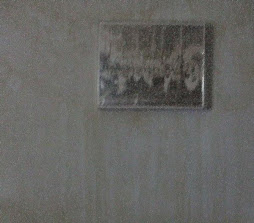






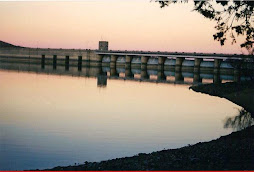







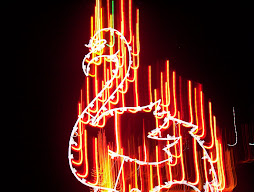




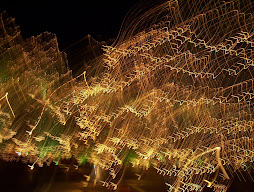













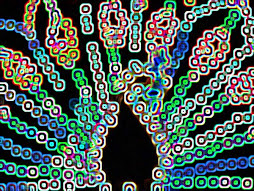









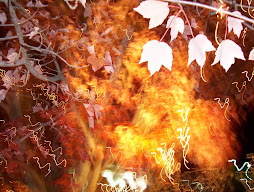













No comments:
Post a Comment